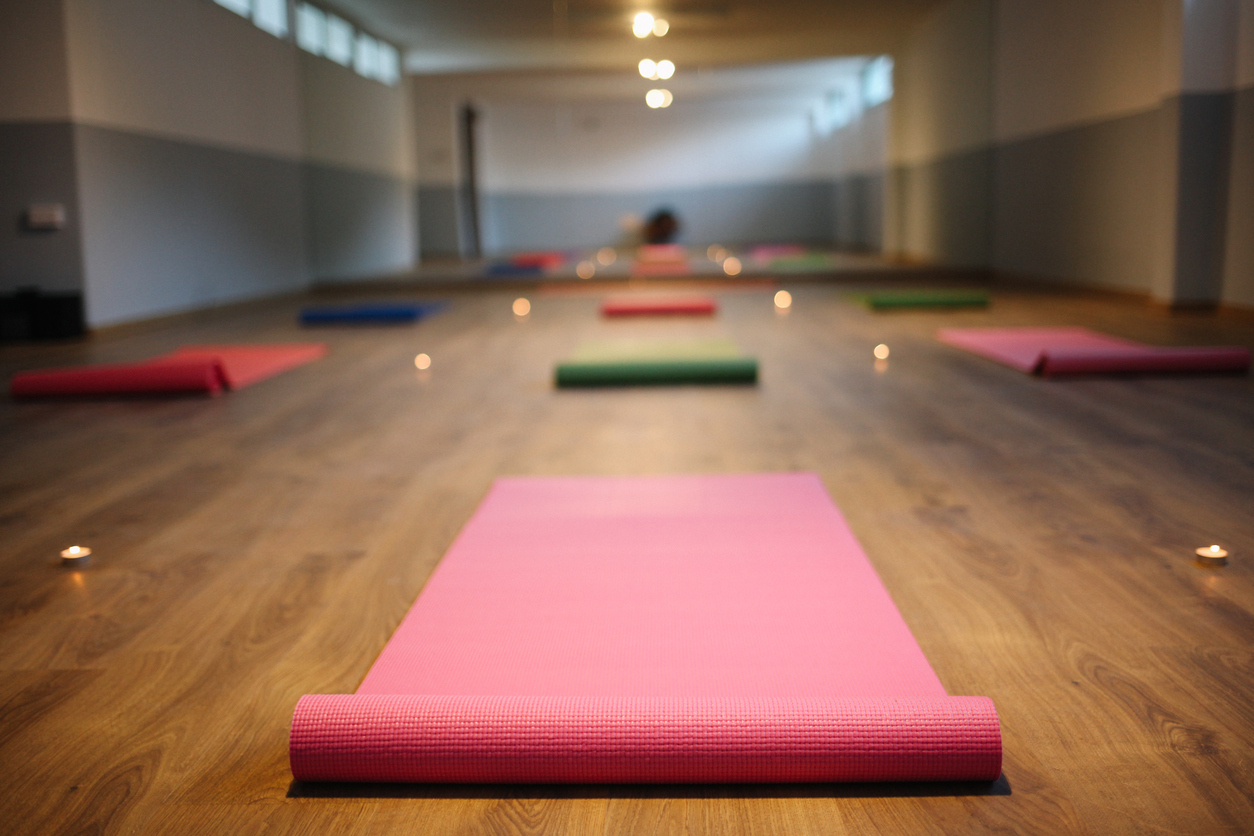It is obvious for those who have spent time within a yoga studio that the practice space holds certain energy because of the way we conduct ourselves there. However, in yoga, the obvious gives way to layers of depth and subtly. What seems standard fare, such as removing our shoes prior to entering the practice space, reveals a spectrum of subtle, interconnected principles upon further reflection. Many studios uphold certain etiquettes to insure maximum benefit to everyone present. Though the purpose behind yoga studio etiquette may not be totally comprehended, the novice yogi is happy to comply with basic yoga studio formalities. In time, these formalities become the culture of the studio, and we rarely question the motives behind them.
Studio Etiquette You Should Know
Whether you are a well-seasoned practitioner, or just beginning your yoga journey, exploring the behaviors inherent to yogic spaces will deepen your connection to your yoga practice and the philosophy it derives from.
1. Leave Your Shoes At The Door
Superficially speaking, shoes bring the energy of route, daily affairs with them. The practice of being barefooted, however, extends beyond the shoe rack by the door. Generally, our feet are the first area of the body that connects with the earth. We ground into our mat and hold our asana poses steady through our feet. Our feet are the foundation of our posture, our gait, and are the living metaphor for “walking our path,” and “taking the first step forward.” Have you ever noticed that almost all yoga practitioners avoid stepping on one another’s mats? The feet release subtle energy. In traditional Vedic settings, a student avoids exposing the bottoms of their feet to their teacher. In turn, humbly bowing to, and touching the feet of their master, brings blessings to the initiate or devotee. By removing our shoes, keeping the souls of our feet clean, and observing how we present our feet towards our teachers and fellow students, we bring awareness to the subtle energy channels of the body.
2. Avoid Wearing Perfumes And Fragrances To Yoga Class.
On the surface it seems apparent that though you may enjoy a particular scent, other students may not appreciate your personal aroma in their practice space. Yoga is primarily a practice of breath, and having clean, pure, fresh air is vital to the conduction of prana within the body. As a yogi enhances their inner purity, synthetic fragrances or food-related odors can be both distracting to the mind and aggravating to the nervous system. As a teacher, I keenly sense a variety of fragrances on my students, whether natural, such as body odor, or applied scents like essential oils, hair products, or deodorant. When a student has deliberately applied fragrance to their body, I will rarely adjust their poses in order to keep their fragrance from clinging to me, and spreading throughout the studio. Arriving freshly showered to class, and as scent-free as possible, enhances the sattvic nature (high quality) of the practice space.
3. Observe Silence In The Asana Room.
Yoga studios draw a beautiful ensemble of souls into their space. Fellow practioners easily become friends, and sometimes grow into spiritual families. The development of the yogic community is oftentimes the glue that brings practitioners back to the same studio, same class, even the same mat placement, again and again. The community building aspect yoga is vital to the development of satsung, sacred gathering. With that said, the asana room is akin to a holy space. To many, the space and time set aside for a yoga class is the only “me time” they may have. To sit in quiet readiness prior to class sets the tone for inward development, and provides the space for subtle awareness to arrive. In opposition, general chitchat, however hushed it may be, is not only distracting to others, it maintains a currant of mundane energy from outside of the studio that, in some ways, overrides the delicacy of inward perception. By maintaining the energetic purpose of the asana space as an area of practice, introspection, and observation, the tone and ambiance of the studio becomes palpable to even the most novice yogi. Developing deeper relationships with your fellow practitioners is nearly effortless in such a space, because everyone is united in breath, focus, and energetic creation. With this in mind, welcome and converse with your friends and neighbors in the reception area of the studio, a place where both social and monetary exchanges are made. The ability to discern between the outer realms of the practice area, and the inner sanctum of the studio, is an active engagement of the subtle energy of yoga. Practicing purposeful silence in the asana space will beneficially enhance your yoga practice, and strengthen the bonds of your yogic community.
Why Studio Etiquette Is Important
Basic yoga studio etiquette houses subtle revelations and deeper comprehension of yogic practices. We are each personally responsible for upholding rules of engagement within the studio, but unless we ask ourselves “why,” the deeper significance behind these acts is lost in the adaptation of yet another societal code of conduct. Instead, look deeper to see beyond the protocol of yoga studio etiquette. Yoga is a precise and refined science. Each act, when practiced with awareness and frequency, has an inner effect greater than what may be perceived from the outside. Simply removing our shoes, arriving to our practice clean of fragrance, and silently holding space in the asana room, sets the tone of a yoga studio, and offers the opportunity for personal development that extends beyond the individual to the whole. In this way, we, as yoga practitioners, are not adopting cultural codes of conduct, but are, in essence, conducting our subtle energy with purposeful awareness and intent.
Learn More From YogaaRenew
YogaRenew is here to help you lean studio etiquette in which you can incorporating into your yoga teacher training. Reach out to YogaRenew today for more information.





